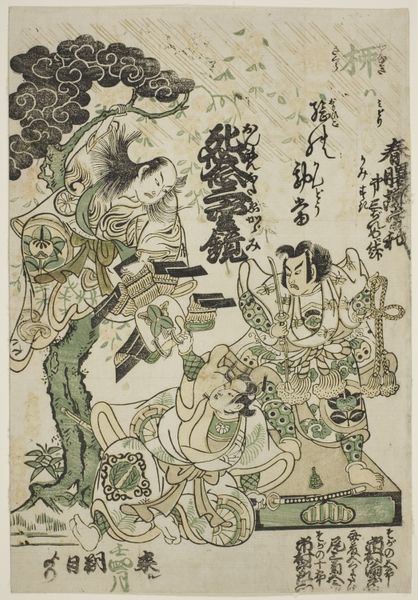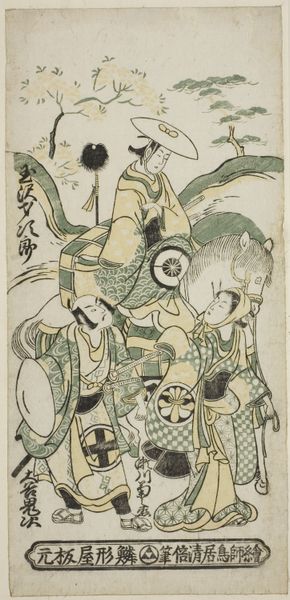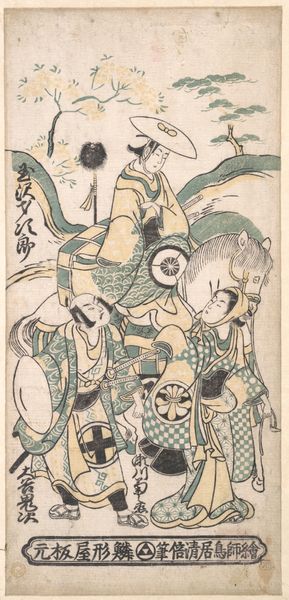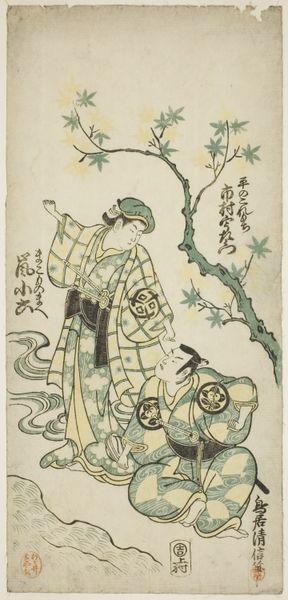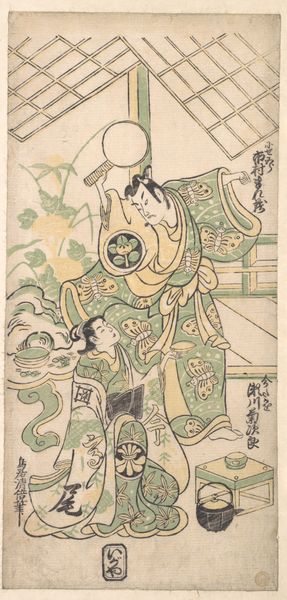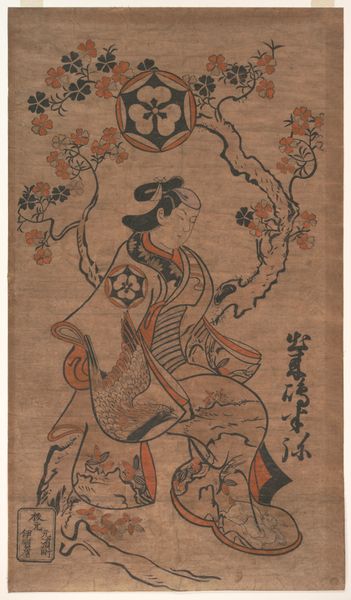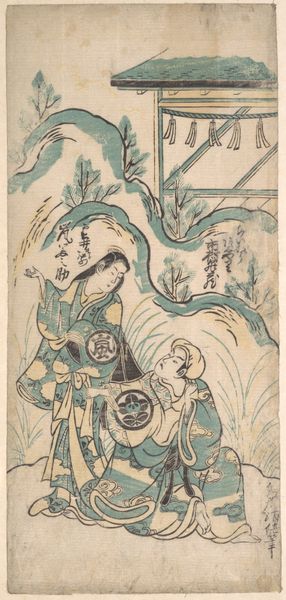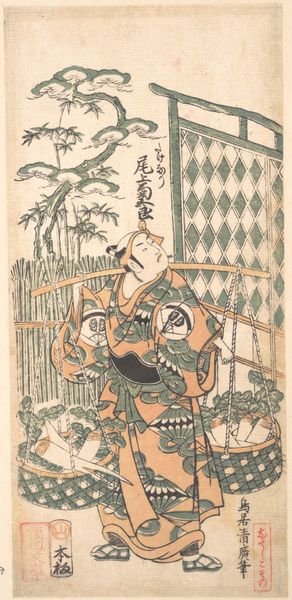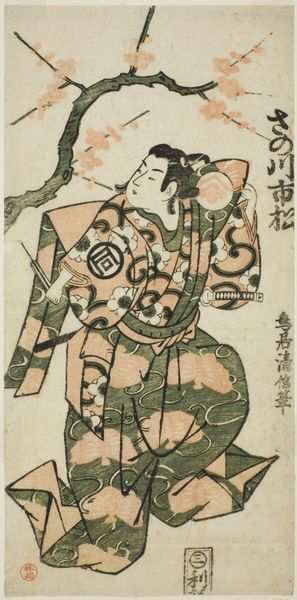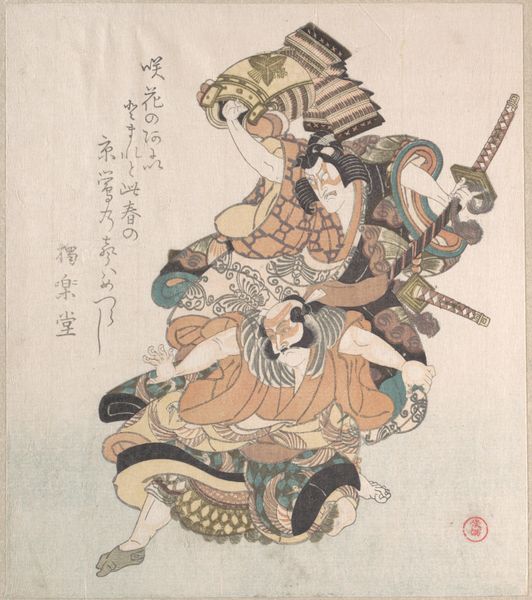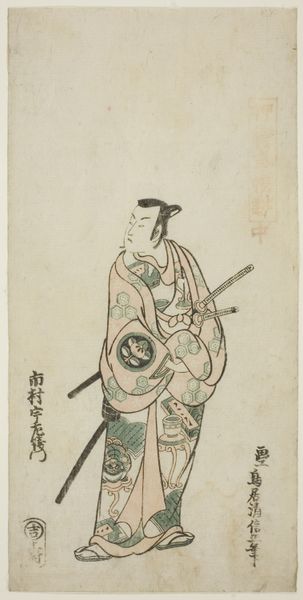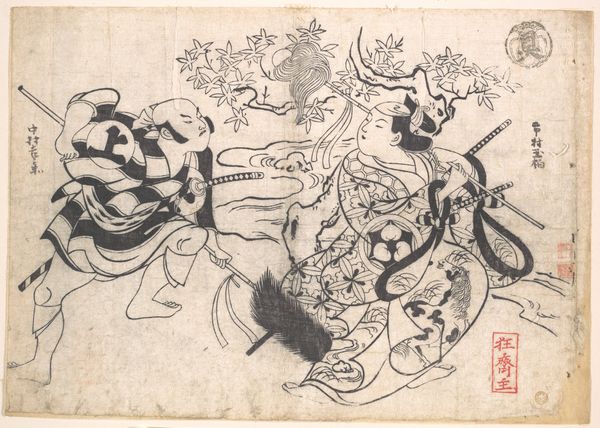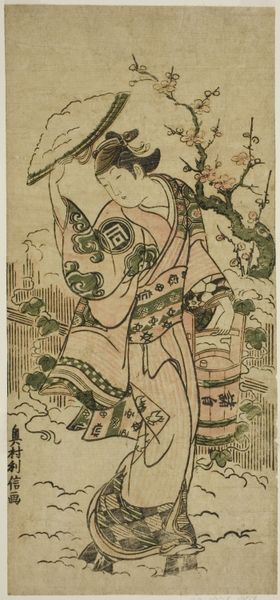
Ichimura Manzo as Yatsushi Goro and Segawa Kikujiro as Yatsushi Shosho 1735 - 1755
0:00
0:00
print, woodblock-print
#
portrait
#
ink drawing
# print
#
asian-art
#
ukiyo-e
#
figuration
#
woodblock-print
Dimensions: 12 11/32 x 5 7/8 in. (31.4 x 14.9 cm)
Copyright: Public Domain
Curator: Looking at this work by Torii Kiyomasu I, dating from approximately 1735 to 1755, you are viewing a woodblock print titled "Ichimura Manzo as Yatsushi Goro and Segawa Kikujiro as Yatsushi Shosho". It's currently part of the collection here at the Metropolitan Museum of Art. Editor: The overwhelming impression for me is one of artifice. Everything seems deliberately posed, flattened, theatrical. Even the coloring feels... decorative, rather than naturalistic. Curator: Precisely! This is very characteristic of Ukiyo-e prints of the period, particularly those depicting Kabuki actors. The composition is undeniably dramatic. We see two figures in elaborate costumes atop a sculpted, rocky platform. Editor: Those costumes are remarkable. The geometric patterns, the stylized crests... even the way the actors' faces are painted speaks volumes. And there's a crane perched almost incongruously at the top, which I find really fascinating, that could be associated with longevity and good fortune. Curator: Ah, the crane, a potent symbol indeed! It speaks to the play's themes. You see, Ichimura Manzo and Segawa Kikujiro were famous Kabuki actors, and this print commemorates them in their roles as lovers in a popular play. Ukiyo-e prints like these were, in essence, celebrity endorsements of the Edo period, celebrating cultural icons. The crane likely would function on that level, reinforcing this cultural import by connecting the celebrity figure to the idea of long-term recognition, celebration, and prestige, a lasting cultural fortune of sorts. Editor: The placement of these prints within the context of theatrical performances explains why they adopted specific symbolic value, emphasizing dramatic moments and characterizing actors to convey underlying meanings. It creates this really interesting feedback loop where social ideas of success and prosperity affect the very core components of artwork. Curator: Absolutely. And the print’s use of color and line work... these are all techniques honed to capture a fleeting moment of theatrical performance. These prints offered ordinary citizens access to a world they could only dream of. Editor: What I find fascinating is how the artist used easily-recognized imagery in such a potent way. A print like this not only recorded the event, but transformed those social connections into material expressions that we, as audiences, could learn from. Curator: It truly is a fascinating example of the power of art as social commentary. Editor: An image that reminds us art reflects and shapes its context.
Comments
No comments
Be the first to comment and join the conversation on the ultimate creative platform.
